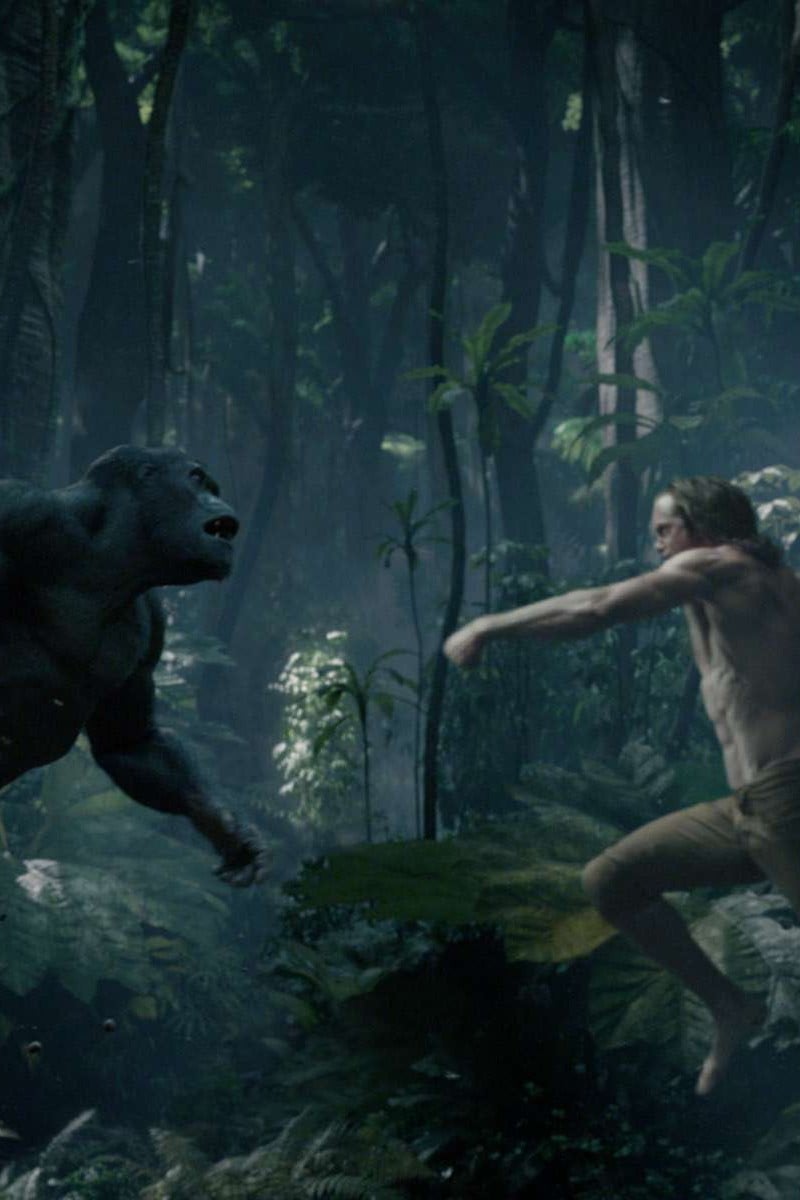
The special effects used to bring The Legend of Tarzan to life isn't as simple as you'd think
Animators push CGI to its limits in David Yates’s big budget re-take on the classic story of the ape-man
 Tarzan (Alexander Skarsgard, right) fights his gorilla brother Akut, who started life as a man in a padded suit and transparent helmet before digital artists turned him into an ape.
Tarzan (Alexander Skarsgard, right) fights his gorilla brother Akut, who started life as a man in a padded suit and transparent helmet before digital artists turned him into an ape.In The Legend of Tarzan, the ape man returns to his home in the jungle and reunites with his childhood friends – lions, elephants, and of course his ape family. But if you envy Tarzan actor Alexander Skarsgard for being able to work with animals, don’t be: as in the recent The Jungle Book, all the animals are completely CGI.
“We didn’t use real animals because it’s very difficult to get wild animals to do what you want them to do in a way that’s humane. With the advancements in modern technology today, it’s not necessary. CG animals do exactly what you want, whenever you want, which is fabulous,” explains producer David Barron.
For scenes where Tarzan interacted directly with the animals, a stunt performer in a grey suit became a stand-in for the animal, providing both Skarsgard and the visual effects team reference points for the action.
To film the scene where Tarzan fights his gorilla brother Akut, who sees him as a deserter, the filmmakers designed a huge padded suit, complete with a transparent helmet, to make the stuntman right sort of size. “Otherwise, we’d later get into all sorts of problems with Alex putting his arms through Akut’s body. It was only used as a guide for the actors and animators – but it helped massively,” explains visual effects supervisor Tim Burke.
To achieve the desired distance, speed and fluidity of motion in scenes where Tarzan swings through the jungle on vines, the visual effects team created a fully CG character, using a Cirque du Soleil trapeze artist as a model so the animators could draw the proper form and motion. Though the body is CG, the face is still Skarsgard’s, thanks to a special method of facial capture that used 16 cameras filming the actor’s facial performance in real time.
While the story is set in Central Africa, most of the filming took place in the Warner Bros Studios in Britain. The filmmakers built seven different versions of the jungle sets, as well as a working waterfall and a collapsible pier.
To capture the vast landscapes with convincing detail, the filmmakers used a six-camera unit, in two rows of three cameras, fitted onto a special aerial mount.
“[We used one] looking forward and another looking backward and then sideways, which effectively gave us a moving 360-degree tile,” says Burke. “The results are great because you’ve got live action combined with live action [filmed on set], so it all feels real and seamless.
“I would say we definitely pushed the limits of plate shooting. I know I have never done anything as advanced or as adventurous as that before.”